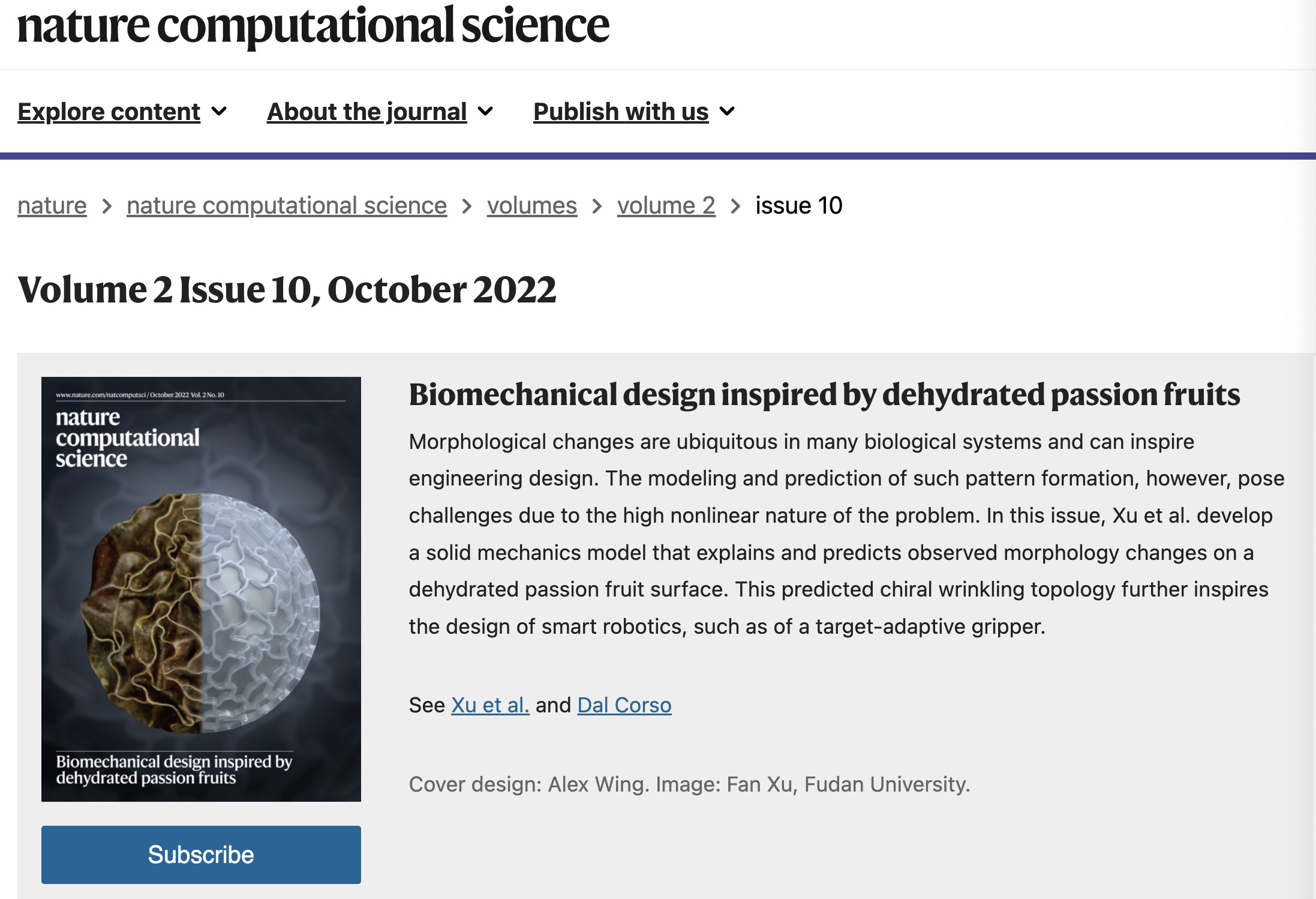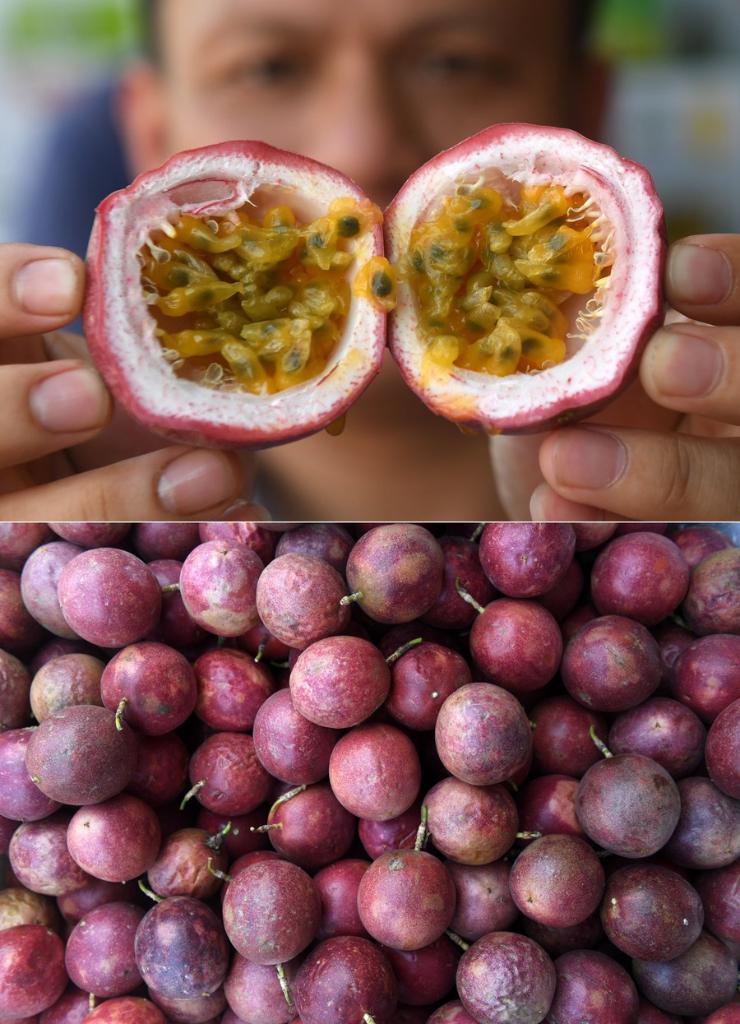
A screenshot of the paper published in Nature Computational Science.
A screenshot of the paper published in Nature Computational Science.
A team of Chinese researchers has found a previously unknown morphological pattern on the surface of dehydrated passion fruits, which inspired them to develop a novel robotic gripper to grasp small objects.
Researchers from Fudan University and Tsinghua University found that during the dehydration process of passion fruits, the surface initially wrinkles into a buckyball pattern, a spherical structure of hexagons and pentagons found on a soccer ball.
As passion fruits keep drying out, the surface transforms into a network of ridges in a chiral mode. Scientists refer to an object as being "chiral" when it cannot be superimposed onto its mirror image. For example, the left hand is a mirror image of the right hand and cannot be superimposed no matter how the two hands are oriented.
The researchers reported in the latest issue of Nature Computational Science that they established a mathematical model and a scaling law to understand the underlying mechanism and to describe and predict the surface change of a deformed core-shell sphere like a drying-out passion fruit.

Combo photo of an exhibitor showing passion fruits during an agricultural product trade fair in Du'an Yao Autonomous County, south China's Guangxi Zhuang Autonomous Region, September 17, 2019. /Xinhua
Combo photo of an exhibitor showing passion fruits during an agricultural product trade fair in Du'an Yao Autonomous County, south China's Guangxi Zhuang Autonomous Region, September 17, 2019. /Xinhua
Guided by the theoretical understanding, they designed a target-adaptive gripper to grasp small objects based on a hexagonal-to-chiral mode transformation.
The gripper system consists of a hemispherical shell made with liquid silicone, an air channel, and a lifting frame that can move up and down. The gripper stably grasped small-sized objects of various shapes and made of different materials, from a nut, screw, and mung bean to a blueberry, irregularly shaped glass, and heart-shaped candy.
The researchers said their experiments shed light on smart-grip designs.
Source(s): Xinhua News Agency